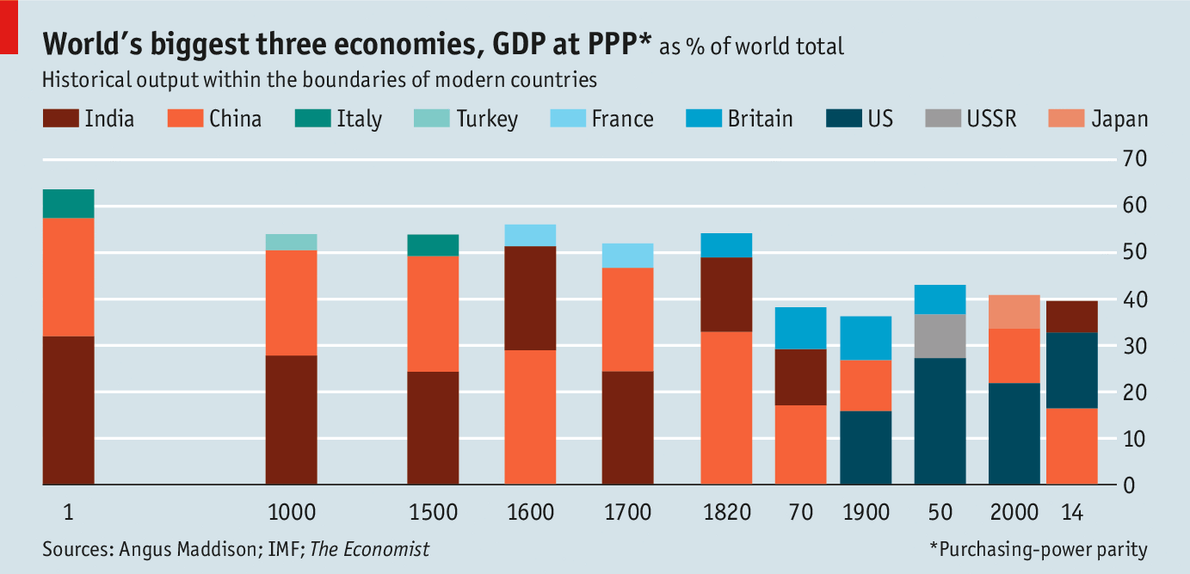 |
| Source: The Economist |
Of course, China and India have huge populations, much larger than that of the United States. Thus they produce a huge amount of goods and services, but those goods and services are spread across a much larger population, leading to a lower level of consumption.
Notice that at the time of Christ, China and India produced nearly three fifths the global GDP. Rome was apparently the third great economy of the time. Much of the world must have been very poor. A thousand years later, the Byzantine empire makes an appearance in the top three. Then during the height of the Renaissance, Italy is back. France and Britain swap places about the time of the Napoleonic wars. The USSR makes its only appearance on the graph after World War II when the economies of Western Europe have been even more devastated than that of the USSR.
Since World War II, three countries have produced two-fifths of the world's GDP, although the mix has varied.
It would seem that China and India are likely to play a larger role in the world, and not only economically, than they did in 1950; the influence that the USA had in 1950 is likely to be more widely shared in the rest of this century.
No comments:
Post a Comment